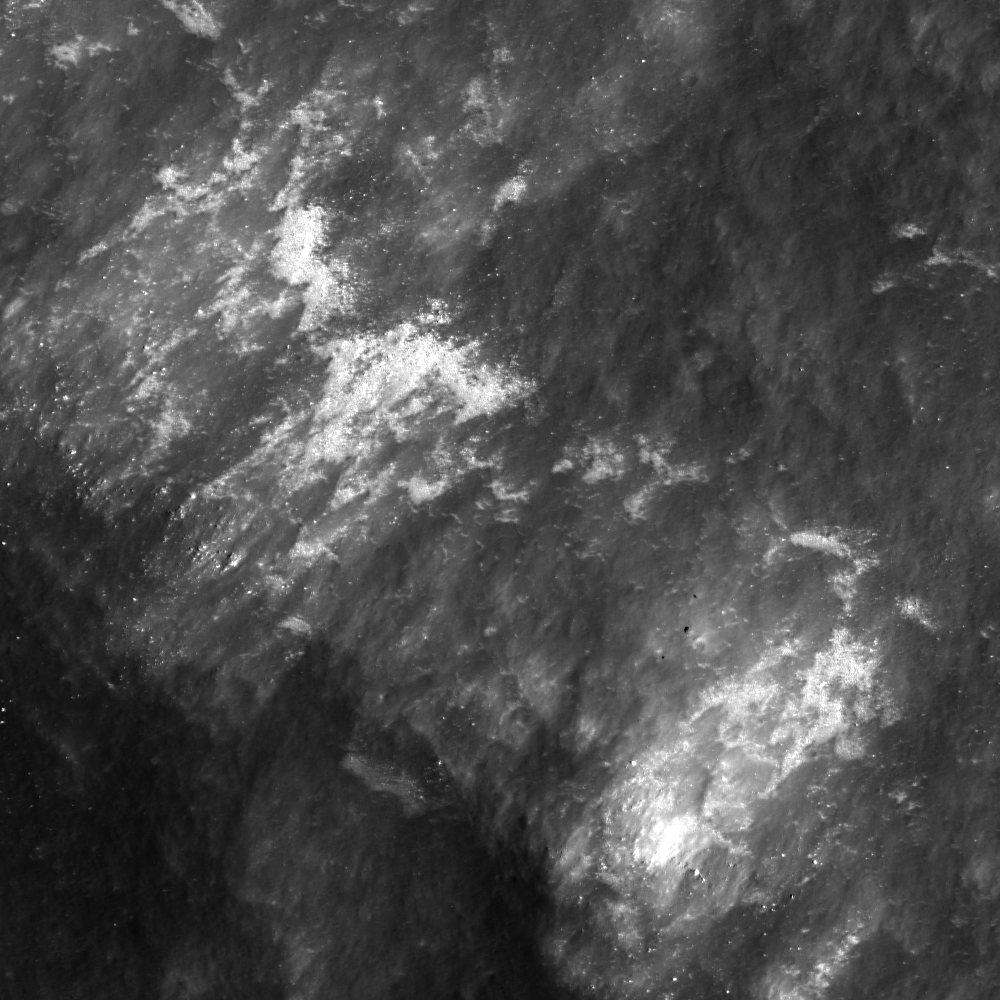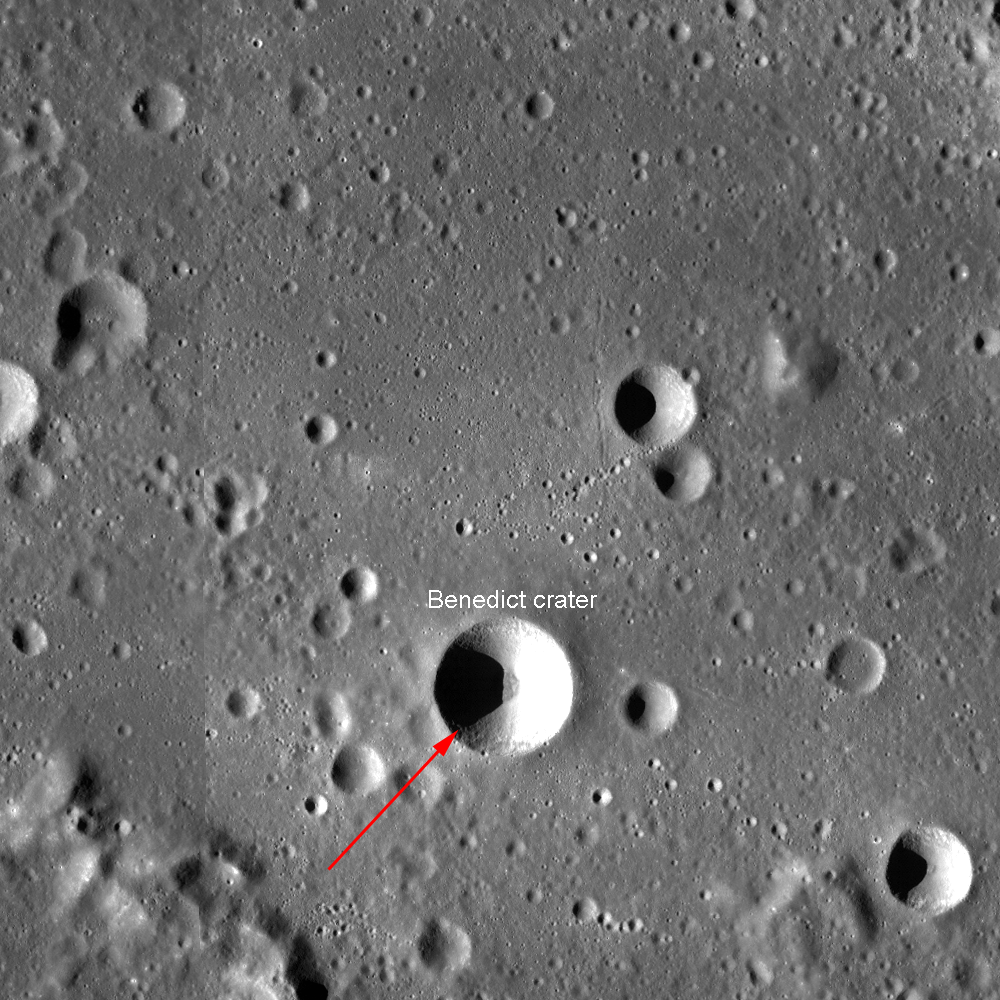
Debris flows occur naturally on most sloped surfaces. This type of 'mass wasting' is actually very common on the Moon. In this case why are small piles of debris accumulating in clumps? This clumping is quite different from other debris flows which are sometimes misidentified as impact melt flows. Perhaps the debris doesn't have enough energy to make it all the way down, or maybe the surface is not smooth.
Or perhaps the crater wall is not a smooth surface perhaps there are little bumps and depressions. We can see a hint of such undulations from looking at the 'texture' of the surface of the crater wall (and others). We can also see this uneven wall surface in Digital Terrain Models of young craters. The bumpy surface acts to trap debris in shallow depressions, inhibiting growth of the spectacular debris flows seen elsewhere. Mass wasting is a continuous process and in a few tens of millions of years perhaps the interior of Benedict crater will look more like some other craters we have featured.
Look for more debris along the crater wall of Benedict in the full LROC NAC!
Related Posts: Dichotomy
Published by Drew Enns on 1 May 2013
